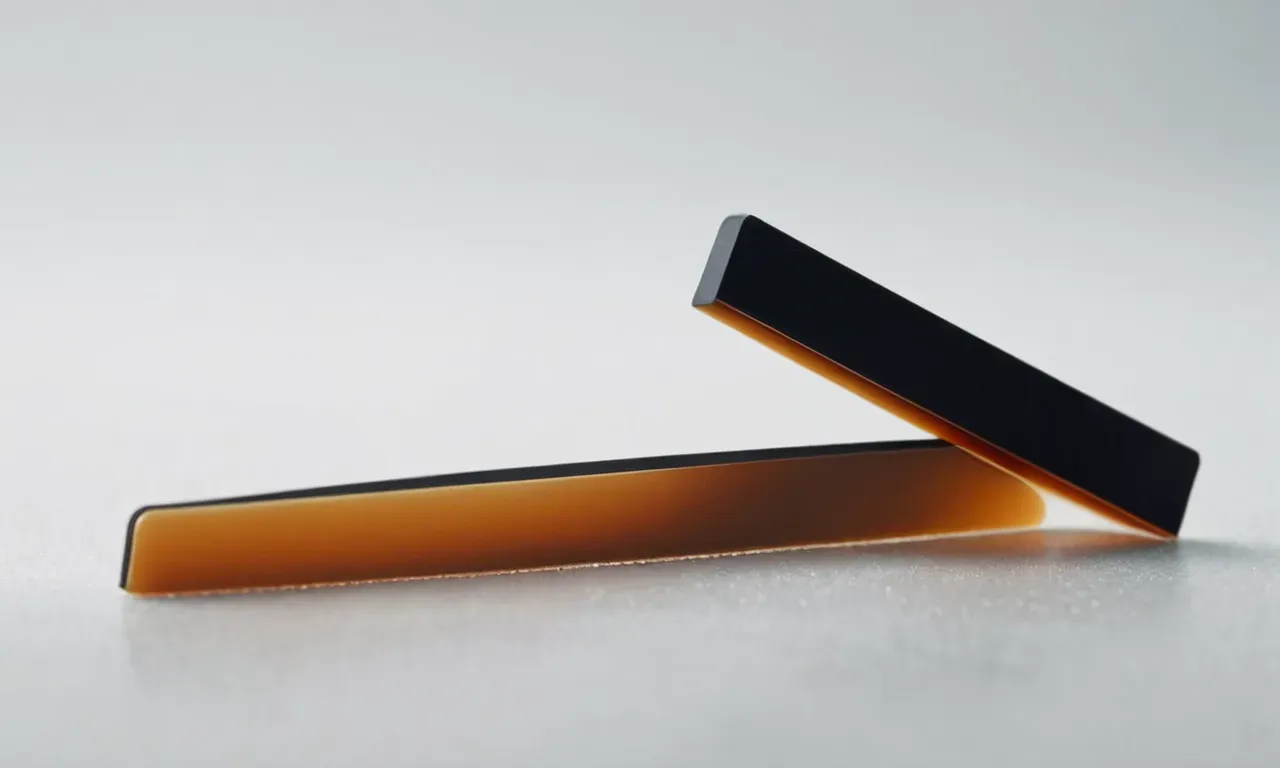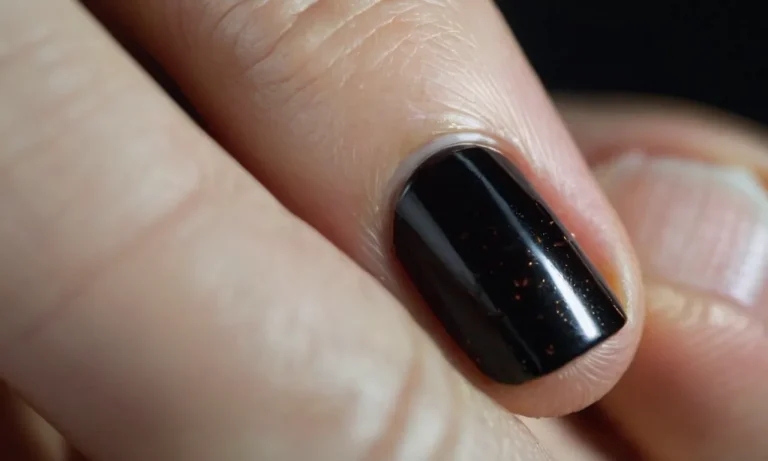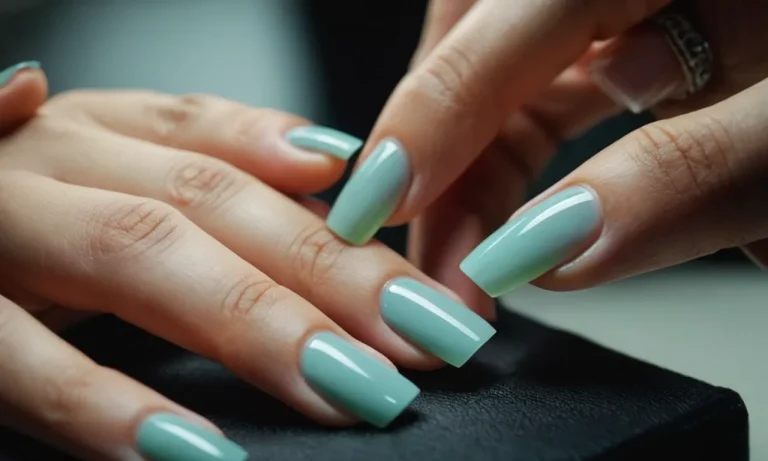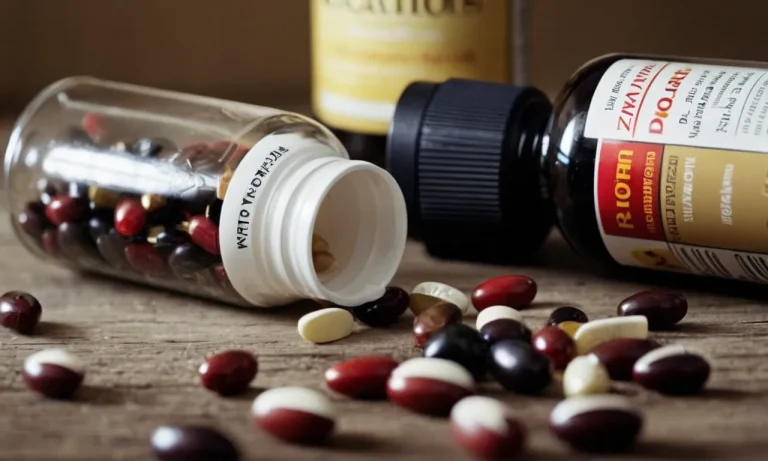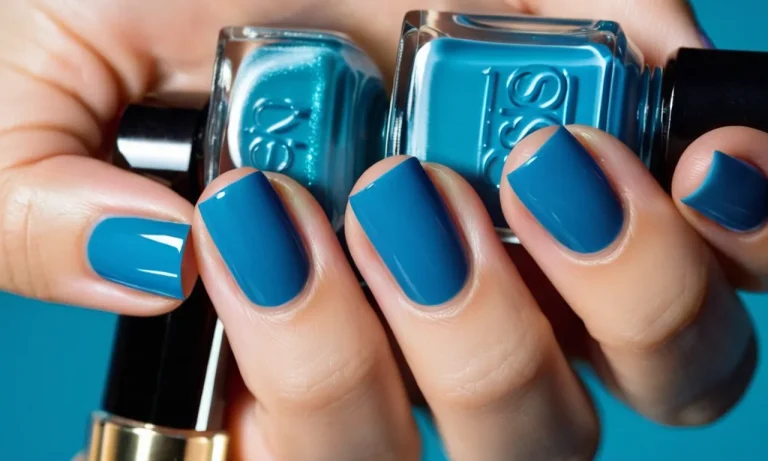How To Clean A Nail File: A Step-By-Step Guide
A clean nail file is essential for beautiful, healthy nails. Using a dirty nail file can lead to the spread of bacteria and fungus, causing infections like nail fungus and paronychia. If you’re short on time, here’s a quick answer to keeping your nail files clean: soak them in acetone or rubbing alcohol, scrub with an old toothbrush, and allow to fully air dry.
This article will provide a comprehensive guide on the best practices for cleaning both metal and glass nail files.
We will cover the importance of keeping your nail files clean, recommended cleaning frequency, supplies needed, and a step-by-step methodology for both metal and glass nail files. Proper storage and care recommendations will also be provided to help keep your cleaned nail files in optimal condition between uses.
The Importance of Cleaning Nail Files
Prevent the Spread of Bacteria and Fungus
Keeping nail files clean is crucial for preventing the spread of infections like bacterial and fungal infections. When we use nail files, especially emery boards, they can harbor microbes that can cause issues like paronychia (infection of the skin around nails), onychomycosis (fungal nail infection), or even staph infections if bacteria enters the body through small cuts or lifts in the nail bed.
Yuck! 😬 Regular cleaning kills these germs before they have a chance to spread to other clients in a salon setting or to our own nails at home. According to the CDC, nail tools should be fully submerged in an EPA-registered disinfectant for 10 minutes between each use for optimal sanitization.
This helps stop the ick-factor in its tracks! 🙌
Maintain Proper Nail Health and Appearance
A clean nail file simply works better! Nail files, especially emery boards, quickly build up debris, dirt, oil, and dead skin cells. This gunk prevents the file from working effectively and smoothly to shape nails.
Regular cleaning restores the abrasiveness of the file and allows it to shape and buff nails beautifully again. Think of it like exfoliating dead skin cells from your face so your skin glows – same idea for nails! 💅 Clean files also reduce the risk of tearing or ripping of the nail.
Rough, contaminated files essentially create micro-tears that weaken nails over time. A study in The Journal of Dermatology found that nail filing removes up to 40 layers of protein structure in one filing session!
Keeping files sanitized ensures we aren’t weakening nail integrity by essentially “sanding” them with unclean tools. 😣 Lastly, clean tools simply give a more professional, tidy appearance. Nobody wants to paint their nails and then use a nail file covered in dusty gunk!
A quick clean keeps files looking neat, effective and ready for beautiful nails. 😊
How Often to Clean Nail Files
Keeping nail files clean is crucial for nail health and preventing the spread of infections. But how often should you actually clean them? Here’s a breakdown of best practices:
For Natural Nails
If you only use nail files on your natural nails, you should clean them at least once a month. Since natural nails don’t harbor as much bacteria and fungi as artificial nails, you can get by with monthly cleanings using soap and water or an disinfecting spray like Barbicide.
For Artificial Nails
If you use nail files on artificial nails or nail extensions, you should clean them much more often – ideally after every use. Artificial nails tend to collect more germs and ‘junk’ in their porous surfaces, which can easily transfer to files. Frequent cleaning is key.
You can use a wire brush or old toothbrush and soap and water to scrub the file clean. Then dip it in Barbicide or another disinfecting solution made for salon tools.
Replace Every 3-6 Months
No matter what type of nails you file, experts recommend replacing your nail files every 3-6 months. The grit on the file wears down with repeated use, making it less effective at shaping nails properly. Old files also tend to harbor more bacteria.
So set reminders to swap your files for fresh ones a few times a year. And always replace immediately if you drop a file on the floor – that’s practically begging for germs to move in!
Following these nail file cleaning guidelines helps ensure your tools stay sanitary for picture-perfect, healthy nails.
Supplies Needed for Cleaning Nail Files
For Metal Nail Files
Cleaning metal nail files regularly is crucial for maintaining proper nail hygiene and preventing the spread of infections. Here are the basic supplies you’ll need:
- Mild soap – Opt for a gentle, fragrance-free hand or dish soap to avoid drying out the metal.
- Old toothbrush – The bristles help remove debris trapped between the metal ridges.
- Small bowl – Fill with warm water for soaking the files.
- Clean towel – For drying the files after washing.
- Nail file cleaner – Special liquid solutions help sanitize and remove buildup.
- Toothpicks – Help dislodge dirt and debris from tight spaces.
You likely already have most of these supplies at home. Nail file cleaners can be found at beauty supply stores or online for around $5-10. Investing in a quality cleaner helps remove stubborn bacteria and maintains the integrity of the abrasive metal surface over time.
For Glass Nail Files
Glass nail files are easier to clean than metal ones. Their smooth glass surface doesn’t allow product and bacteria buildup like traditional files. Here’s what you’ll need:
- Mild soap and water – A gentle hand or dish soap dilute in warm water works great.
- Soft-bristled toothbrush – Helps gently scrub the file.
- Clean towel – For drying the glass file after rinsing.
- Hydrogen peroxide – The bubbling peroxide helps remove staining and disinfect.
- Baking soda -Forms a gritty paste with water that lifts debris.
Most of these supplies can be found at the dollar store. The toothbrush should have soft, flexible bristles that won’t scratch the glass. Avoid using nail polish remover, as it can strip the file surface over time. With minimal effort, your glass nail file will look brand new!
How to Clean Metal Nail Files
Step 1: Soak in Solvent
The first step when cleaning metal nail files is to soak them in a solvent like rubbing alcohol or acetate. Completely submerge the files in a small container filled with the solvent. Let them soak for 5-10 minutes so the solution can break down and dissolve any built up nail product, skin cells, oils, and grime.
According to the American Academy of Dermatology (AAD), nail files should be cleaned regularly with a disinfecting solution like isopropyl alcohol (1) to help prevent the spread of infections. Rubbing alcohol is an ideal solvent because it kills 99.9% of germs, bacteria, and viruses on hard surfaces.
Step 2: Scrub With Toothbrush
After soaking, take an old toothbrush and gently scrub the entire surface of the metal file under running water. Make sure to scrub in between the ridges and grooves of the file. This mechanical scrubbing action helps loosen and remove any remaining dirt or debris stuck to the file.
According to dentist Dr. Ada Cooper, old toothbrushes are perfect for cleaning around the house since their bristles allow excellent scrubbing action for tough stains and buildup (2). Their small size also enables cleaning in crevices common on nail files and beauty tools.
Step 3: Rinse and Dry
After thoroughly scrubbing both sides of the metal file, rinse it well under clean running water. Make sure to rinse away any residual solvent, loosened grime, and toothpaste. Finally, thoroughly dry the file with a clean lint-free cloth or paper towel.
According to Encylopedia.com, proper drying of nail implements helps prevent moisture accumulation which can harbor mold, fungi, and bacteria that causes nail infections (3). Storing files in a clean, dry place will help keep them sanitized between uses.
How to Clean Glass Nail Files
Step 1: Wash With Soap and Water
The first step to cleaning a glass nail file is to wash it with mild soap and warm water. This helps remove dirt, oil, and debris that can build up on the file over time. Start by wetting the file under warm running water, then add a small amount of gentle hand or dish soap and work it into a lather.
Gently scrub the file using your fingers or a soft-bristled toothbrush, being careful not to apply too much pressure. Rinse thoroughly under running water. Make sure to get into all the nooks and crannies of the file’s etched glass surface to remove any lingering soap residue.
Step 2: Disinfect With Alcohol
After washing, it’s important to disinfect the nail file to kill any germs or bacteria. The best way to do this is by spraying or wiping it with a 70% isopropyl alcohol solution. Ensure the entire surface of the file is coated, then let it sit for at least one minute before wiping dry with a clean cloth or paper towel.
The alcohol will evaporate quickly, leaving the file disinfected and ready for use. For maximum germ-killing power, you can repeat this step 2-3 times. Just be careful not to soak the file in alcohol, as this could damage the glass over time.
Step 3: Allow to Fully Dry
Once cleaned and disinfected, it’s crucial to let the glass nail file dry completely before using or storing it. Any remaining moisture can encourage bacterial growth. After cleaning, place the file on a clean towel and allow it to air dry for at least a few hours, or ideally overnight.
You can also carefully dry it with a hair dryer on a low setting if needed. Ensure no water remains pooled in the etched grooves of the glass. When thoroughly dry, the nail file will be fresh, disinfected, and ready for your next manicure session!
By regularly washing, disinfecting, and drying your glass nail file, you can help extend its lifespan and effectiveness. Well-maintained glass files stay sharper for longer compared to traditional emery boards. Be sure to avoid soaking the file or using harsh chemicals that could damage the glass.
With proper care between uses, your glass nail file can stay hygienic and last for years of beautiful, chip-free manicures!
Proper Storage and Care of Nail Files
Store in a Clean, Dry Place
Keeping your nail files in a clean, dry location is crucial to prolonging their usage and preventing damage. The ideal storage spot is inside a drawer, cabinet, or closed container where they won’t be exposed to moisture, dirt, or debris.
Bathrooms tend to be damp areas with lots of bacteria present, so avoid stashing your files in this spot. The moisture and germs can encourage corrosion of the abrasive surface and metal portions of the file, rendering them dull and unsuitable for shaping nails.
Avoid Exposure to Moisture and Bacteria
As mentioned, moisture is the enemy of nail files. When the abrasive surface becomes wet, it causes the grit particles to loosen and fall out more rapidly. This significantly shortens how long the file will stay effective at filing and buffing nails.
Bacteria and fungi also love to grow in damp conditions. If you fail to thoroughly dry a nail file after use, microbial growth can take hold in as little as 48 hours. This creates serious hygiene issues that can spread infections to clients in a salon setting.
Inspect Frequently for Signs of Damage
During daily use, routinely check your nail files for any cracks, rust spots, missing grit, bent metal tangs, or other defects. As soon as deterioration becomes visible, remove the tool from service. Attempting to salvage a severely compromised nail file often backfires.
Small snags on the abrasive surface can rapidly shred dry, fragile nail coatings or scratch the proximal nail fold. Jagged and overused metal file tangs also pose a high risk of cutting into the surrounding skin. To avoid infections, throw out any questionable files right away.
According to nail care statistics from the American Academy of Dermatology, nearly 50% of nail technicians discover signs of damage on their files after just a month of use.
While top-shelf professional nail files tend to last approximately three months with proper care, average drugstore files may only survive 4-6 weeks before requiring replacement.
Conclusion
Keeping your nail files clean is a quick and easy process that pays off with better nail health. By regularly cleaning and disinfecting your metal and glass nail files, you can help prevent the spread of infections for both yourself and your clients.
Follow the recommendations provided to ensure your nail files are free of bacteria and ready for beautiful nail shaping and care. Happy filing!

